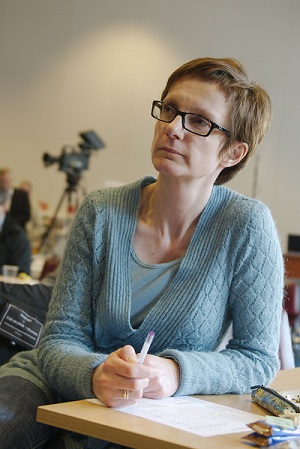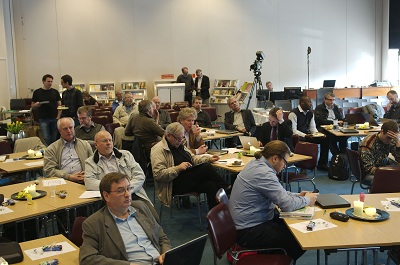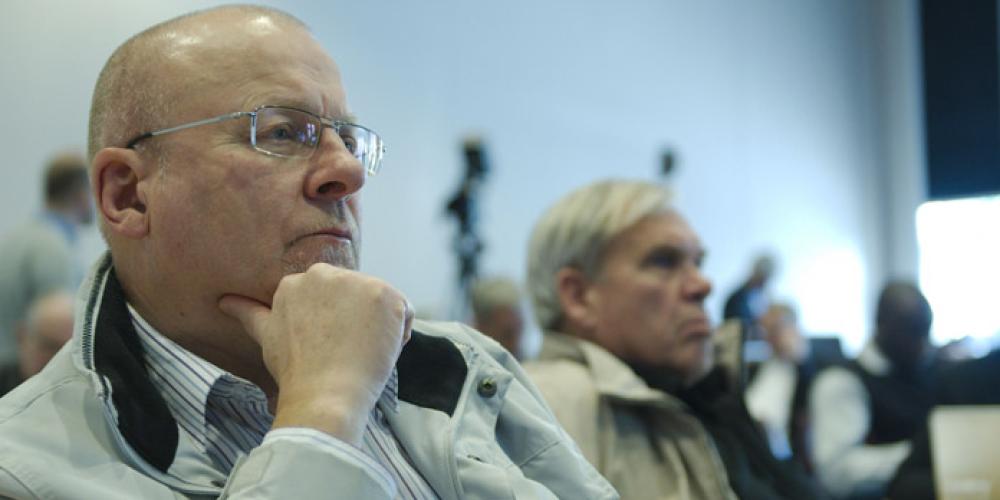Working Among Postmoderns
“How could your church bridge the gap between the church and postmoderns?” That was one of the questions posed to forty Adventist pastors in Norway.
"How could your church bridge the gap between the church and postmoderns?" That was one of the questions Dr Miroslav Pujic posed to forty Adventist pastors in Norway at a pastor's meeting designed to sharpen their skills in communicating with postmoderns. The pastors met at Tyrifjord junior college 25-27, March.
Norway is one of the most secular countries of Europe. Only 5% of the population goes to church regularly. Dr Pujic, reminded the Norwegian pastors that postmoderns are one of the largest people groups in the world. Still pastors and church members often think of people in the 10/40 window as the prime focus for evangelism. "There is no recognition of postmoderns as a mission field," Dr Pujic stated. The fact remains that the majority of the Norwegian population may be termed postmoderns. Therefore the church should know how to communicate the gospel effectively to this group of people.
 Norwegian pastors are painfully aware of the shift in the local society. Evangelistic strategies of the past are not bringing the results they did decades ago. However, the Norwegian pastors are passionate about sharing the good news of Jesus in their local communities.
Norwegian pastors are painfully aware of the shift in the local society. Evangelistic strategies of the past are not bringing the results they did decades ago. However, the Norwegian pastors are passionate about sharing the good news of Jesus in their local communities.
Dr Pujic, Communication and Ministry to Postmoderns director of the Trans-European Division of Seventh-day Adventists, with Janos Kovacs-Biro, evangelism director of the Trans-European Division, were the main presenters at the workers’ meeting focusing on “Communicating Faith in a Postmodern Culture.” The Norwegian pastors gathered to re-imagine evangelism in the modern culture.
In his presentation “A Walkable Discipleship Pathway for the 21st Century Adventism” Janos Kovacs-Biro shared examples of discipleship pathways used by some churches. Kovacs-Biro stressed the importance of recognising the need for pastors to have the patience to walk beside people who begin a journey towards faith.
Kovacs-Biro referred to the Engel scale on spiritual receptiveness. The scale goes from minus 8 which represents a person who rejects the supernatural. Personal surrender is set at zero on the scale, while a fully committed disciple of Christ is defined as a plus eight. Statistics show that eight years is the average time a person needs to go from a minus eight to personal commitment.
“Many think of baptism as the place of arrival,” warned pastor Kovacs-Biro. “It is not. People need to grow and develop in a systematic way also after baptism,” he said.
 Regardless of communication skills and discipleship pathways, the most important thing is that a love for Jesus and our fellow beings motivate pastors. During the morning devotionals three pastors shared their personal stories of why they are Seventh-day Adventists. In one of the morning devotions Harald Giesebrecht, pastor of the Cornelius church in Oslo, shared passionately why he is a Seventh-day Adventist. He talked of the three basic longings within Adventism: The longing for Jesus, the longing to follow the Word and a longing for the reviving power of the Holy Spirit. “Every doctrine we teach springs out of a longing to be with Jesus,” pastor Giesebrecht said to his fellow pastors.
Regardless of communication skills and discipleship pathways, the most important thing is that a love for Jesus and our fellow beings motivate pastors. During the morning devotionals three pastors shared their personal stories of why they are Seventh-day Adventists. In one of the morning devotions Harald Giesebrecht, pastor of the Cornelius church in Oslo, shared passionately why he is a Seventh-day Adventist. He talked of the three basic longings within Adventism: The longing for Jesus, the longing to follow the Word and a longing for the reviving power of the Holy Spirit. “Every doctrine we teach springs out of a longing to be with Jesus,” pastor Giesebrecht said to his fellow pastors.
“The personal faith stories that our colleagues shared each morning was very inspiring, said pastor Øystein Hogganvik.”
“To me the most inspiring part of the meeting was the report on the different outreach efforts that have taken place in our division recently,” pastor Atle Haugen told tedNEWS after the meetings.
The Adventist church in Norway numbers 4.700 members in a population of five million.





